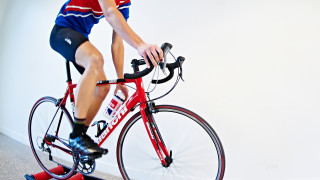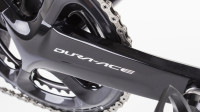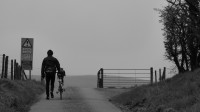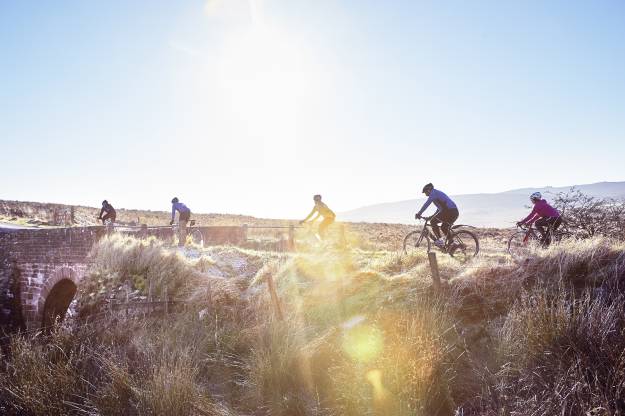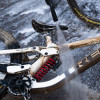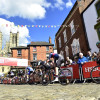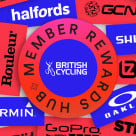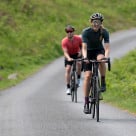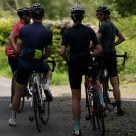Knowledge Level: Intermediate
In these days of smart trainers and virtual cycling platforms such as Zwift, traditional rollers can seem a bit outdated and limited but having a set and being able to ride them is definitely still worthwhile.
Balance and bike handling
Unlike a turbo or static bike, rollers work on your balance, bike handling skills and core stability. Many riders find that by investing time in learning to ride rollers they feel more balanced, confident and comfortable when riding outdoors.
Pedaling technique
Rollers reward a smooth and balanced pedal stroke. Listen to the hum of your rollers and, if you hear a constant even pitched whir, you know that your pedal stroke is smooth. If you hear a whir that goes up and down in pitch, you need to smooth things out a bit.
Recovery spins
If you’re due for a recovery spin, a low resistance and high cadence spin on the rollers is the perfect choice. As well as the benefits of riding rollers described above, if you’re not using your smart trainer and not riding on Zwift, you won’t be tempted by other riders to push too hard and turning your recovery ride into junk miles.
Warming up
Whether it’s track league, cyclo-cross, XC MTB, circuit race or time trial, rollers provide a convenient, portable and effective way to warm-up. They fold up easily, won’t chew up your tyres like a turbo can and, for cadence based warm-up protocols such as the British Cycling 20-minute warm-up, are ideal.
Setting up your rollers
-
Ensure rollers are laid on a flat, level and hard surface. If you’re using a rubberised mat to catch sweat and reduce noise and vibration, make sure that it doesn’t obstruct or rub against the rollers.
-
Position the rollers next to a wall, rail or in a doorway.
-
Adjust the length of the rollers so that the front roller sits just in front of your front axle.
-
Place a water bottle or track pump on the floor 1.5-2 bike lengths in front of the rollers. This will give you something to focus on, aiding balance and preventing you staring at your front wheel.
-
Novice riders may want to wear trainers, rather than clip-in shoes, and consider wearing a helmet until they can start, stop and ride confidently on the rollers.
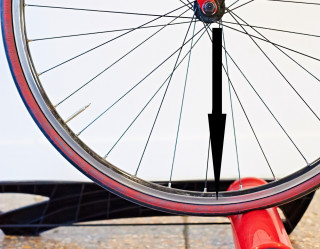
Getting on and clipping in
-
Ensure the bike is in a moderately sized gear for mounting . This should give enough drive with one stroke to get the wheels rolling and means you don’t have to change to a harder gear immediately after getting started on the rollers.
-
Position the bike on the centre of the rollers and straddle the top tube with your feet on the floor or the frame of the rollers. Hold the bars by the hoods.
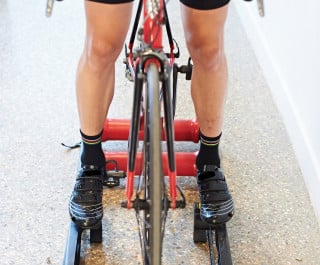
-
Put your outside pedal (the furthest from the wall) to the bottom of the pedal stroke and clip it in.
-
Place your inside hand on the wall, straighten the bike up and shift yourself up and onto the saddle. As you do so, clip your inside foot in.
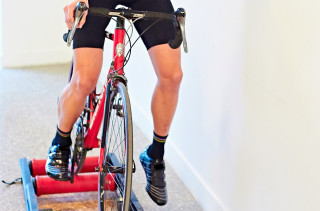
-
Sit stationary on the rollers, with your inside hand still on the wall and move your outside hand from the hood the bar tops. Pause there until you feel relaxed and balanced.
Starting pedalling
- Still holding onto the wall, begin pedalling. Focus on the water bottle on the floor in front of you and keep a relaxed grip of the top of your bars with your other hand.
- Increase your pedalling speed, you’ll notice that, the faster you pedal, the more stable the bike become. Keep focussing on the bottle and maintain a relaxed grip, no white knuckles.
- As you build speed and become more confident, reduce your contact with the wall one finger at a time.
Some riders may find it useful to have an assistant who can hold your saddle and aid balance but this isn’t essential. - When you feel comfortable (this may not be during your first session) transfer your hand from the wall to the tops of your handlebars.

-
Concentrate on creating a smooth and even noise with your pedalling.
-
Relax, focusing on the bottle, allowing the bike to move around underneath you and not tensing up or over correcting.
-
Maintain posture through your trunk, not your arms. Avoid excessive weight on your hands.
-
Keep efforts fairly short to begin with, 2 minutes. Practice stopping and starting and note how the bike becomes more stable the faster and smoother your pedal and the more relaxed your are.
Dismounting
-
Begin to freewheel and place your hand on the wall.
-
Allow the wheels to come to a halt. Do not use your brakes to slow down.
-
Rotate a pedal to the bottom of the pedal stroke and then unclip that foot. Slide that foot down onto the rails of the rollers or the ground. Tilting the bike slightly away from the wall may aid this.
-
Tilt the bike back towards the wall, unclip your other foot and step down onto the frame.
-
Step off the rollers.
Progressing
- Work on moving your hands from the tops, to the hoods and the drops. When moving hand positions, keep your hand and arms relaxed and gently move your hands one at a time.
Shift up and down your gears and experiment with different pedalling speeds. - As you become more confident, try taking, drinking from and replacing a water bottle.
You will soon find that you become more confidant and can begin to build up session duration. Build up to regular short 10-15 minutes blocks and, once you can ride comfortably for 20 minutes, you can start to perform actual workouts. Leg speed and technique sessions are most suited to rollers.

